Subscribe to our Blog
Subscribe to always be in touch with us and receive the most interesting articles in the sector
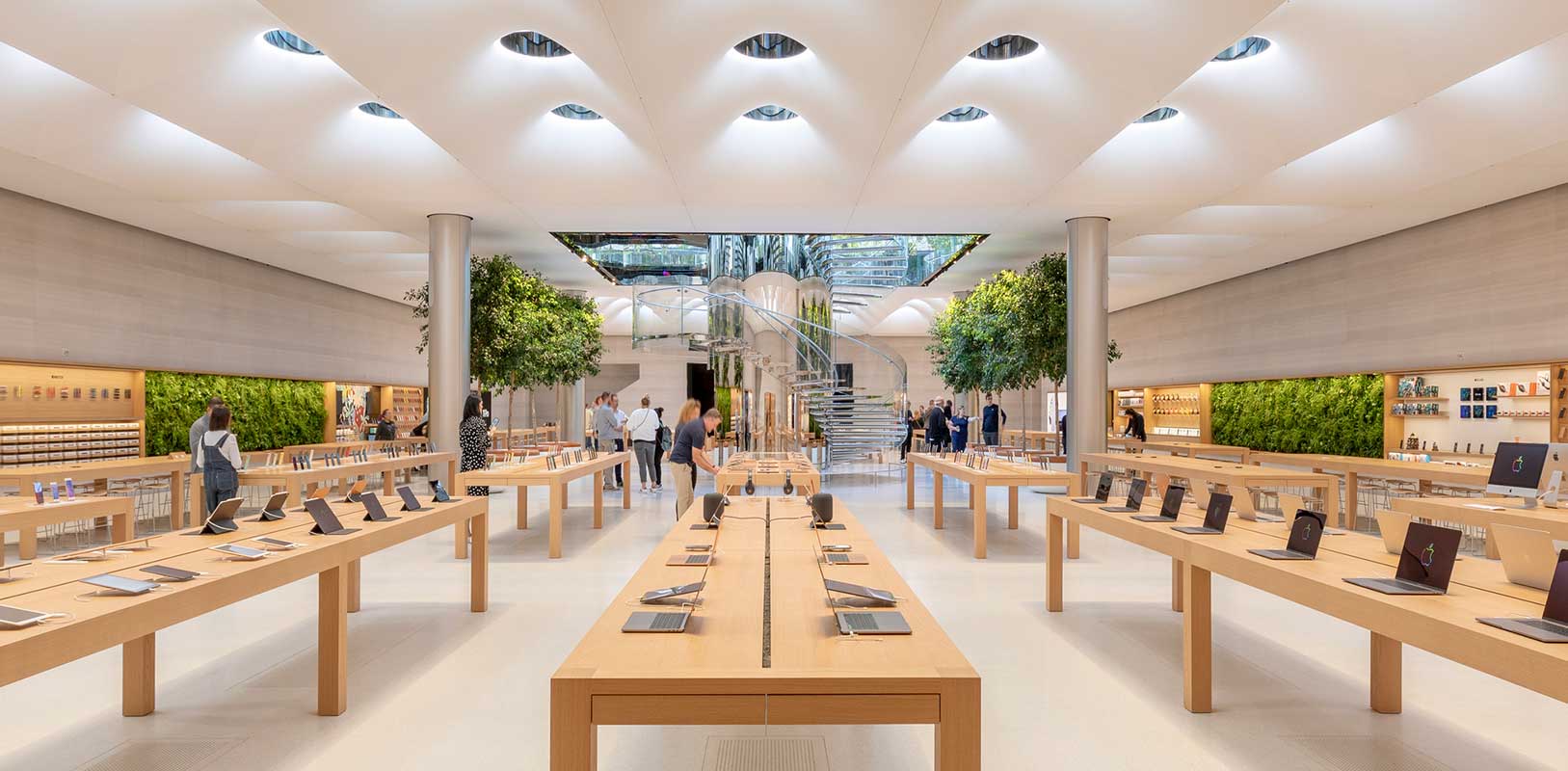
“With decoration, you can only create two types of spaces: those that are merely pretty and those that impress. The choice is yours.”
If you have a commercial premises or are thinking of opening one, two questions are likely running through your mind: How can I increase my sales and attract more customers? What can I do to retain my current customers? There are many factors that can help you achieve this goal, from keeping your social media up to date to the prices of your products. However, there is a crucial aspect to elevating your brand: the decoration of your premises.
“Retail has undergone a drastic transformation in recent years, and with it, the decoration of commercial spaces.”
Undoubtedly, ambiance is the great forgotten element. Rarely is it given the importance it deserves. Think about it for a moment: decoration is responsible for impressing your customer, highlighting your strengths, and making your weaknesses less noticeable. It is essential for creating a welcoming atmosphere that invites the customer to enter, buy, and return. You must keep it in mind if you want to see your sales curve rise dramatically.
Remember, this decoration must align with your brand image. A compact brand identity adapted to your audience will be the foundation of your entire commercial project. Finding a balanced design and decoration, in line with your business activity and harmonious with the surroundings, is key.
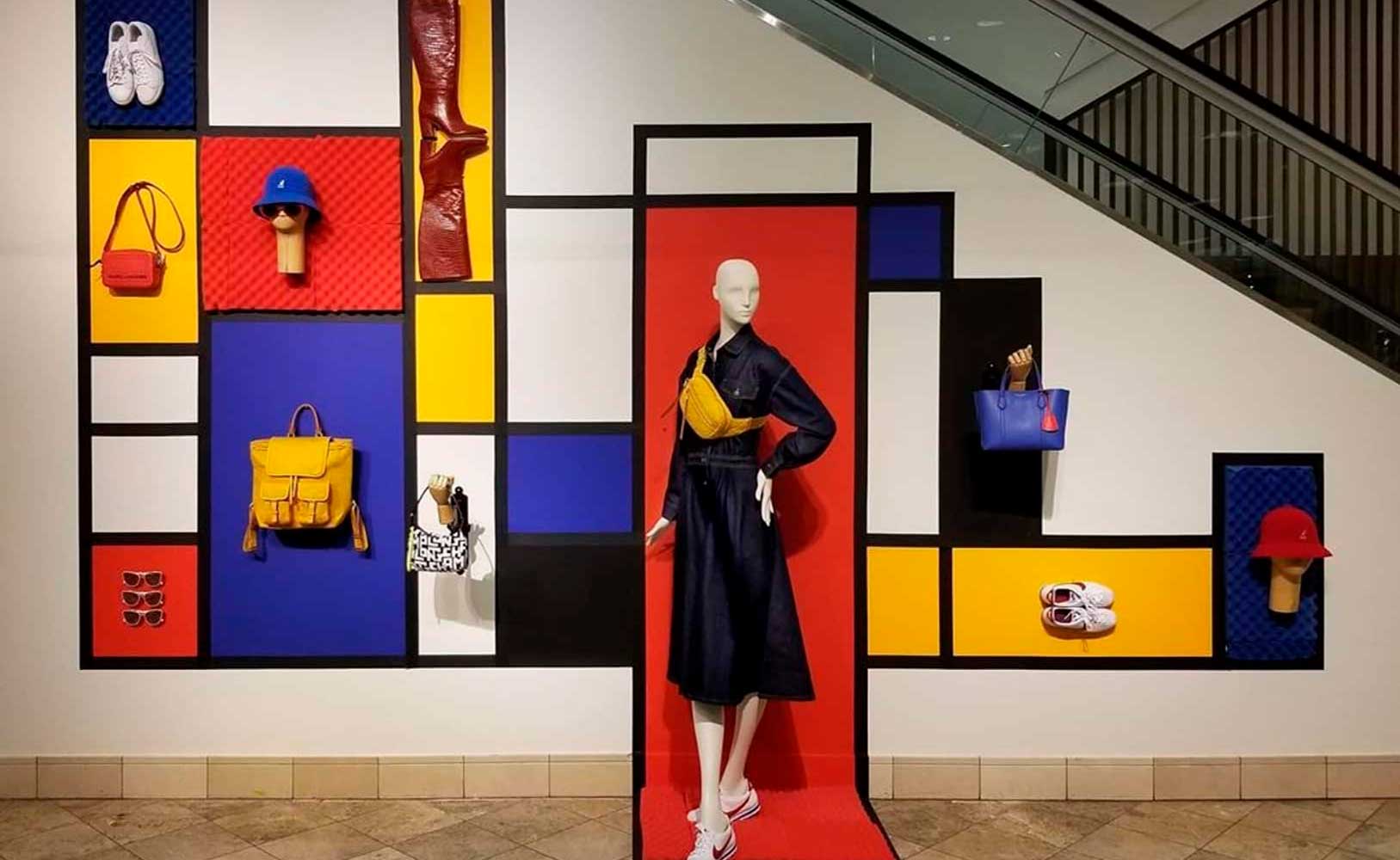
SAKS FIFTH AVENUE store interior, Yonge Street, Toronto, Canada
The retail world changes rapidly, with increasing competition. The key lies here: through decoration, make customers prefer you for being unique and unrepeatable. There is a wide range of products with the same price, quality, and features; under these conditions, the only difference between choosing one product over another will be how it is displayed. Give your business a unique personality, different from others.
It’s not about including numerous decorative elements in your store but about conducting a prior analysis of your customer, your goals, opportunities, and weaknesses. This way, you can create a design tailored to your consumer, with meticulously studied decoration.
The atmosphere of your store begins from the outside. The first thing that catches the eye is your facade and shop window; therefore, it has to be the essence of the premises. It serves as a business card, and those who stop to look must understand at a glance what you sell; you only have one chance to make a good impression. It acts as the first filter for people approaching your business, selecting the most interesting public for your store. It should be bright, colorful, and interesting to create curiosity and a desire to enter. Look at how they do it at Bergdorf Goodman department stores in New York.
If a person doesn’t enter your store, they won’t buy anything. It may sound obvious, but many people forget this. They don’t invest in window decoration, losing the greatest point of attraction.
“Never forget, the shop window is your brand; it will offer you a world full of possibilities.”
Enhancing the exterior image of the premises is as important as the interior if you want to attract new customers. However, it’s not enough just to make it pretty with some mannequins dressed in seasonal clothes. It must be thoughtfully designed with a prior study.
Your shop window needs to tell a story. It should be created with a core concept. With a purpose. This story should be so attractive that a simple glance at the window compels the passerby to look back to understand the message you’re conveying.
The shop window must move the customer. Make them feel the desire to acquire the product you are showing them. If, before you start decorating your window, you take a moment to think about that conceptual idea you want to carry out, the potential customer who observes it will quickly become your buyer.
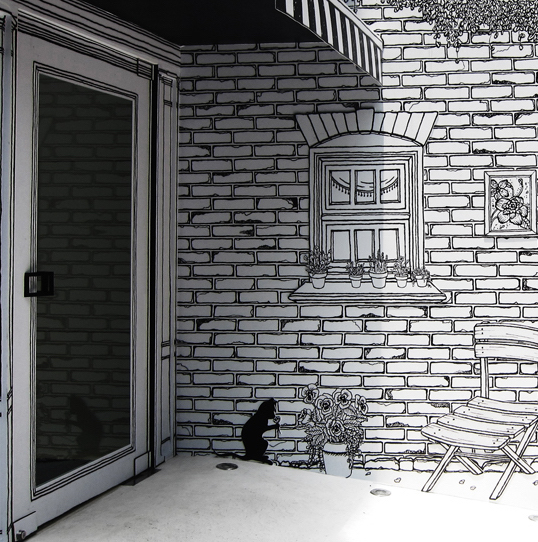
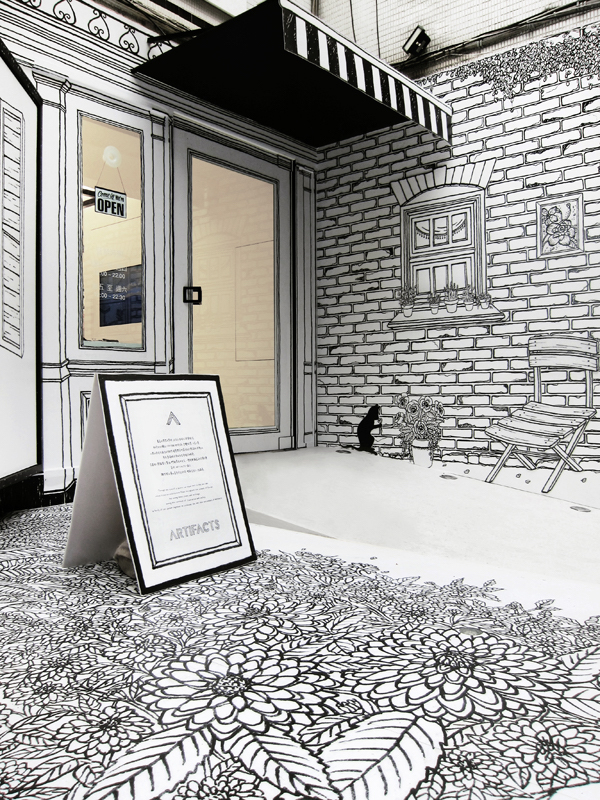
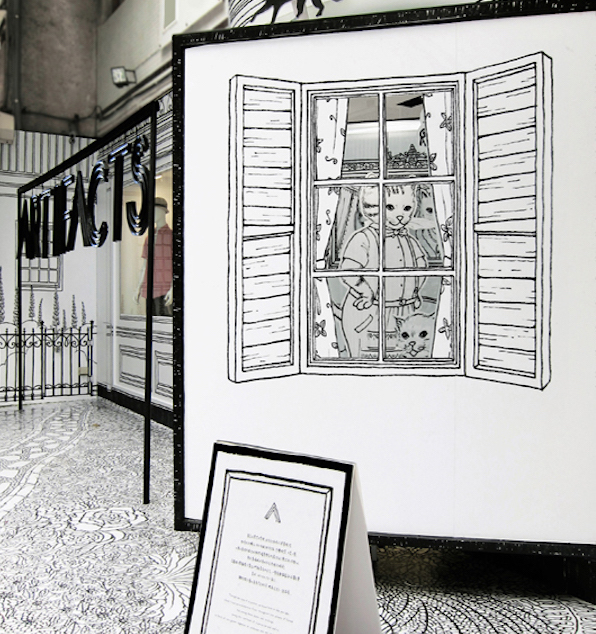
“A fairytale world“. A Daizy Gallery project for the anniversary of “ARTIFACTS”
Knowing how to choose and position the displayed items is a very important factor in achieving a well-decorated shop window.
An important trick for decorating your shop window is knowing how to locate the “focal point,” which is located in the central part at a height of 1.5 meters, with a diameter of 1×1 meter. You should take advantage of this spot by placing your star product there. When deciding on the location of the rest of the decorative items, keep in mind that the human eye, after looking at the center of the window, directs its gaze to the right and then to the left.
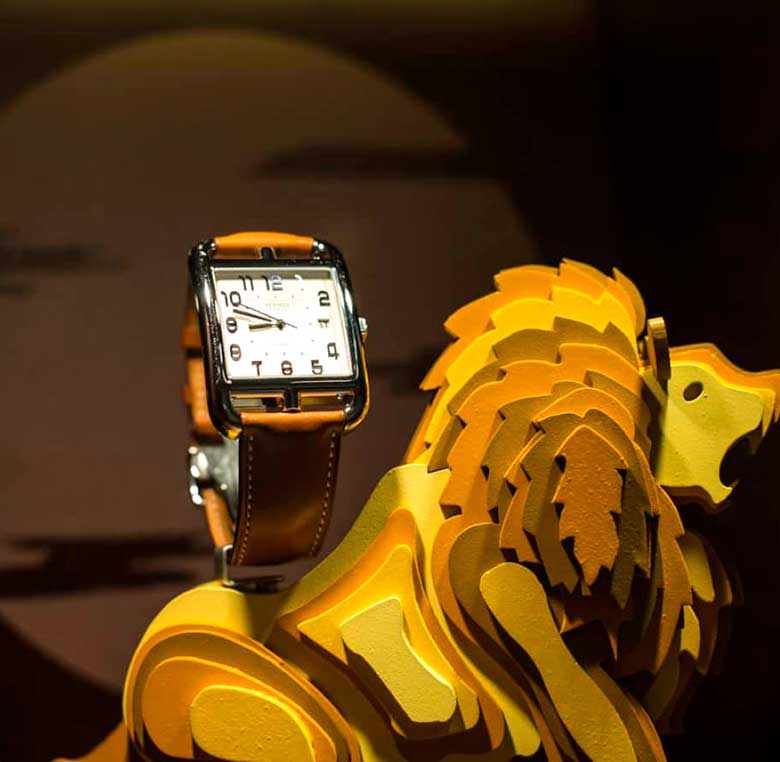
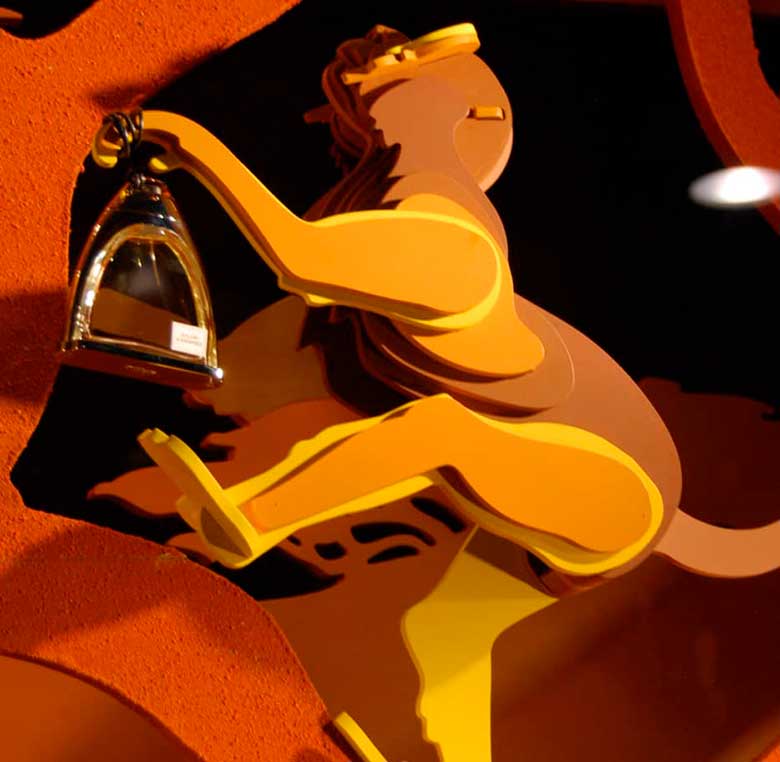
According to research by the Secretariat of the International Colour Exposition in Seoul 2004, when users were asked to rate the importance of colour when purchasing products, 84.7% of respondents thought that colour represented more than half of the importance among the various factors influencing product choice. Colours are fundamental in shop window decoration. They create your distinctive mark depending on their use and combination. Monochromatic colours indicate elegance, simplicity, and exclusivity, while polychromy contributes to conveying originality, boldness, and novelty. Moreover, colour helps create associations with different objects and products, which is a “more with less” approach—we can convey a lot with very little. Regardless of the colour scheme you choose, it must always be in harmony with your brand image, values, and, most importantly, the story you have decided to tell.
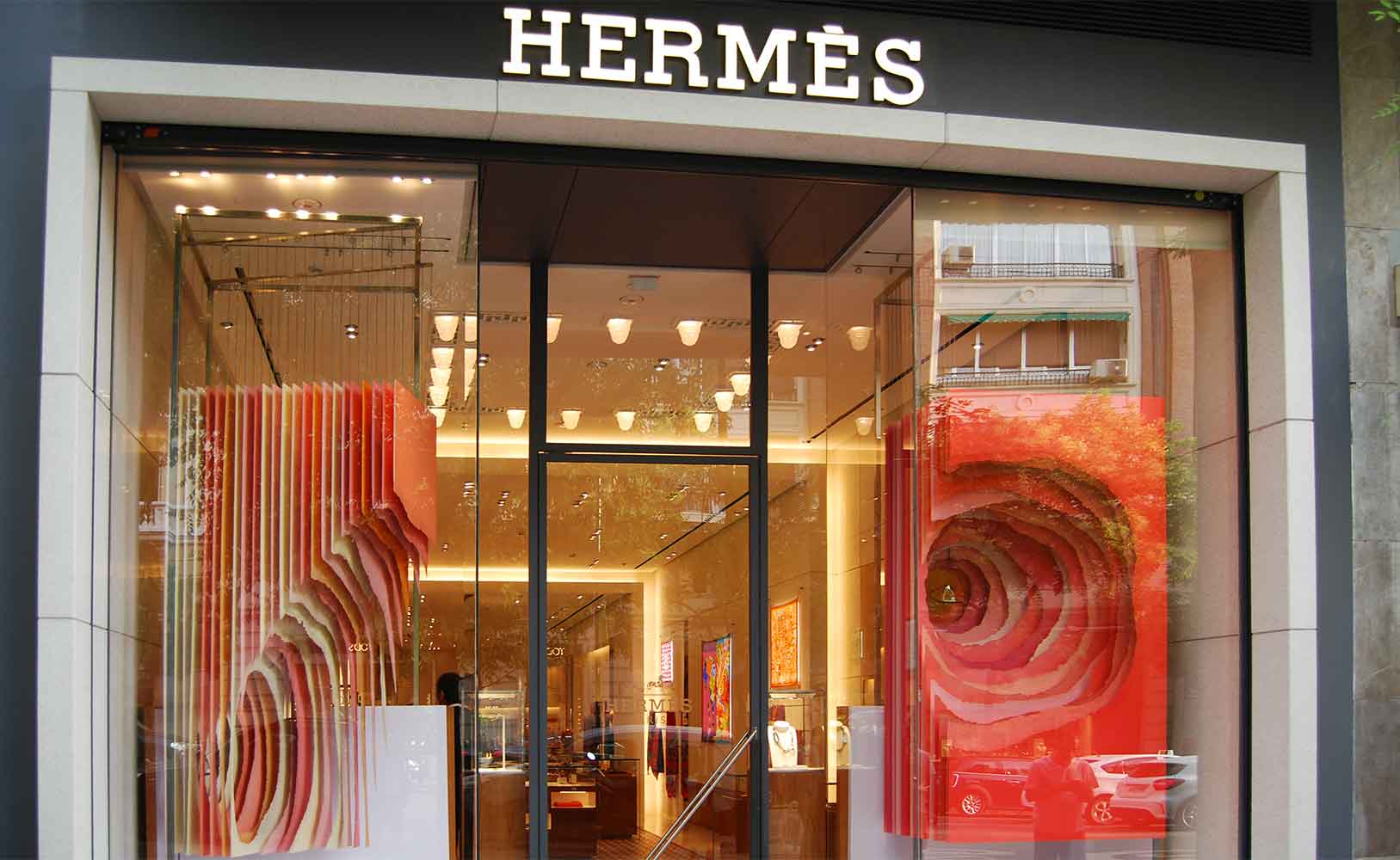
Hermès Spain showcase to present the Gallop perfume. Example of the use of colours to generate depth following artistic design lines.
In the shop window, we aim to create an eye-catching image. Good lighting is essential for it to fulfil its purpose 100%. No matter how spectacular or impactful it is, without the right lighting, it will go completely unnoticed.
Lighting must be well thought out. It should be adjusted to the colours used in the background, the tones of the products, and the decorative elements. For example, if you choose to use very dark tones and a sober decoration, you will necessarily need to enhance it with different strategically placed spotlights. On the other hand, if you use light tones, be careful not to over-illuminate as you may dazzle the passerby.
In short, it’s a combination of extensive or intensive beam luminaires, allowing you to create contrasts and highlight products. A strategy that must be studied if you want your shop window to have an impact.
You should also be familiar with the different types of lights that will allow you to decorate your shop window. LED lights are a good option as they illuminate areas without heating the displayed products. They can be warm or cool light, economical and versatile. Another option is halogen or neon lights, used specifically to highlight certain elements.

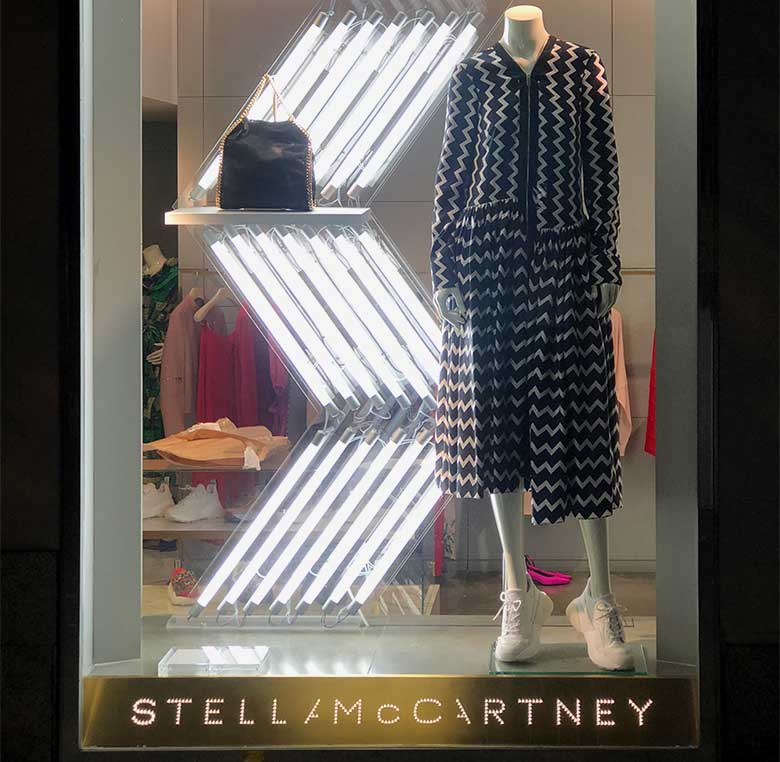
Luminous window dressing made with fluorescent tubes for Stella Mc Cartney Spain boutiques
There are many options for decorating the shop window and facade with different and original elements.
For example, we can use digital print vinyls, whether promotional (for sales or special days) or permanent (decorative or informative).
Signs (with or without lighting), 3D letters, banners, totems, posters—there are many essential elements for attracting, signaling, and informing the passerby.
Using them will differentiate you from your competitor, positioning you in the consumer’s mind as unique and distinct.
If you also opt for incorporating technology, you have many resources and solutions to choose from.
Digital elements are excellent for attracting attention, giving a sense of leadership and innovation. Incorporating LED screens and digital signage is undoubtedly one of the trends in commercial space decoration that has the most impact on the customer and enhances the shopping experience.
“You must turn your shop window into a destination in itself.”
Interactive showcase created by Pearl Media for the Blue Moon
Once you have attracted the customer inside through the facade and shop window, the internal decoration comes into play. Here, all your effort should focus on ensuring that the customer completes the entire journey you have mapped out for your store and completes the purchase. How can you achieve this? Easy, impact them with the decoration; it’s your great ally.
85% of shoppers consider colour one of the main reasons for buying a product. Colour significantly influences purchasing decisions and increases sales. Which one suits you?
Colours can create different thermal sensations. They will be much higher for warm colours and lower for cool ones. The same applies to colour and space; a small, poorly lit space with light colours can appear larger, while a large space with high ceilings with darker colours will feel cozier.
Furniture is also a strong point in decoration. Depending on its shape, materials, and arrangement, you can provoke different sensations according to your message.
In terms of shape, you should create different volumes that surprise the customer. Always in line with your values, to create a coherent and recognizable brand image. Besides the aesthetic part, it must be functional and practical. It must display the products attractively but also be accessible, allowing the products to be easily found and reached without assistance.
The arrangement of furniture is important for creating an optimal customer journey, where they walk through the maximum possible path to see all your products, thus increasing the probability of purchase. You should also provide customers with spaces to rest and sit. If the customer spends more time in the store, they will buy more products.
Cada material proyecta sensaciones diferentes en el consumidor. Según sea el material que más abunda en tu tienda, le aportará una u otra personalidad a la misma. ¿Cuál es el material que eliges para que transmita tu mensaje?
Madera: aporta sensación de calidez, hogar y naturaleza. Da calma y tranquilidad a la mente del consumidor. Se puede identificar como algo antiguo, como es el caso del estilo vintage que está de tendencia actualmente.
Cristal: proporciona una sensación más fría, aunque es perfecto para espacios pequeños ya que aporta sensación de amplitud. Su carácter transparente hace que la luz sea uno de los elementos clave para este material. Ofrece multitud de posibilidades combinado con otros materiales. Muy usado en estilos modernos de decoración, con líneas sencillas y elegantes.
Otra idea si cuentas con un espacio reducido es el espejo, este refleja la luz y hará que tu espacio parezca mucho más amplio.
Metal: en muchas ocasiones se usa para reforzar a otro material por su resistencia. Sin embargo también es muy característico del estilo industrial, simulando antiguas fábricas estadounidenses, donde prima el metal, ladrillo visto y techos altos.
Plásticos: es uno de los materiales más usados ya que en muchas ocasiones puede simular a otros materiales. Es perfecto para crear cualquier tipo de espacio pero particularmente los modernos, con líneas elegantes.
Metacrilato: es un material plástico, transparente, de gran rigidez y resistencia a los agentes atmosféricos. Propiedades como su alta resistencia al impacto, gran dureza y fácil mecanización lo han convertido en uno de los materiales más utilizados. Perfecto para dar un toque moderno y exclusivo a tu marca.
PVC: material plástico muy ligero, versátil, resistente e inocuo. Tiene numerosas aplicaciones como impresiones digitales y mobiliario.
Cartón pluma: material plástico versátil y ligero. Se usa para impresiones, letras corpóreas…
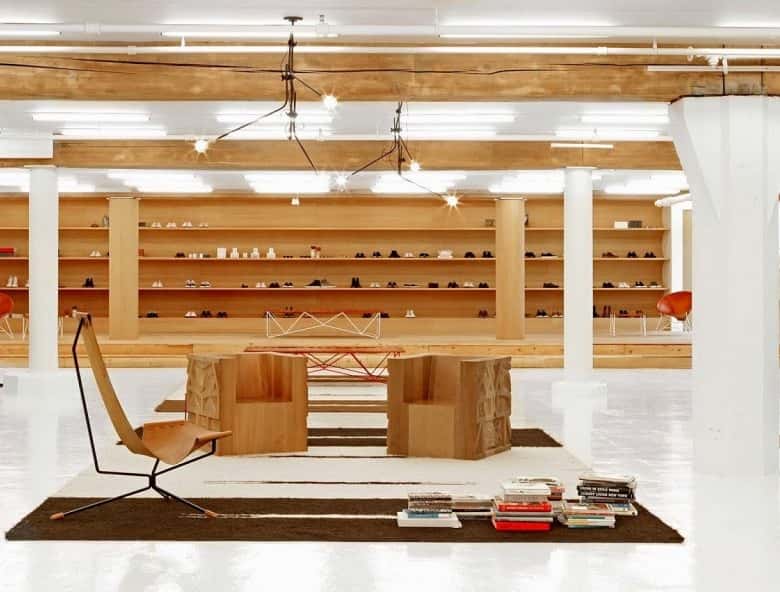
Interior of the Totokaelo fashion store, a combination of white and wood for furniture and decoration.
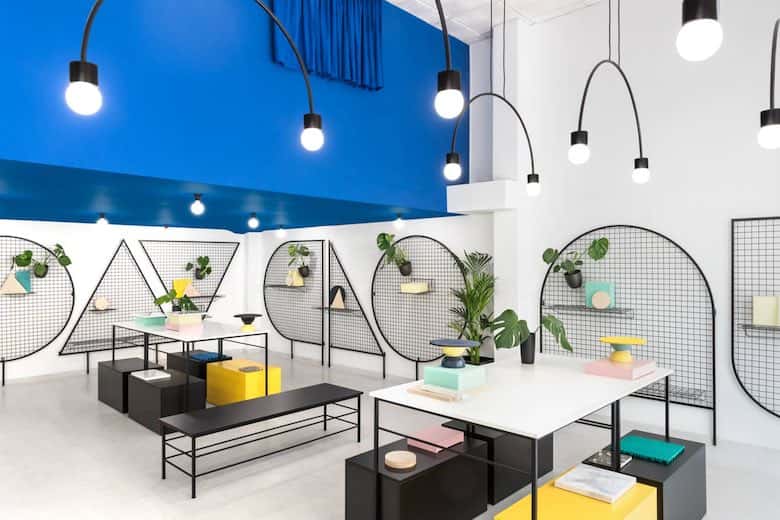
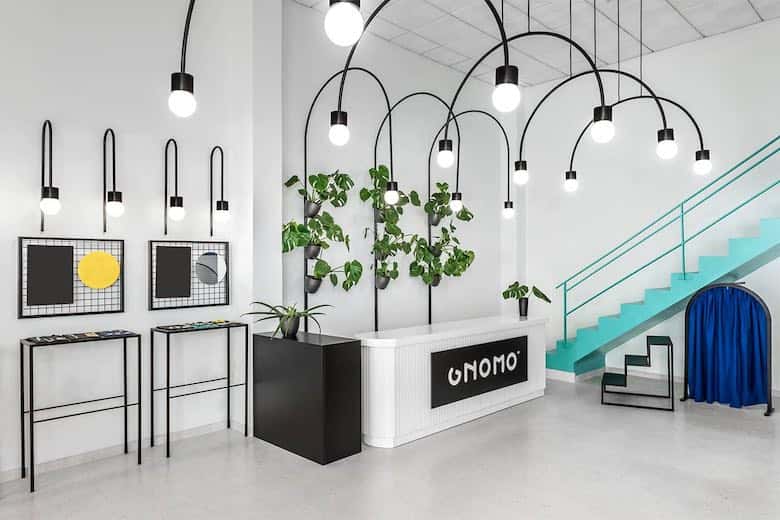
Gnomo, a concept store in Valencia that uses metal and PVC in its furniture and decoration, creating a clean and modern space.
Light is the key to visual communication. It directly influences how the customer perceives your product. It creates sensations and is an essential tool to highlight corners and create a cosy atmosphere.
An inadequate lighting system can distort the product when the goal is to highlight its attributes. There are many lighting options available. Halogen lamps can be a good choice as their light colour is warm white, providing a long-lasting and bright halo.
LED systems are undoubtedly the future. Their high efficiency places them at the forefront of lighting. Additionally, they allow for adjusting intensity and colours. They offer high-quality light and significant energy and economic savings. LED is increasingly associated with home automation, which integrates technology into the intelligent design of enclosed spaces. This allows you to control the lighting from various devices, even remotely.
It’s always advisable to avoid dazzling customers and to steer clear of fluorescent lights, although these can be a good option to highlight a specific space or product.
The intensity of the light should also be appropriate, avoiding extremes of too little or too much brightness. Every nook and cranny of your commercial space should be considered. For instance, fitting rooms should have good lighting to ensure customers feel good about your products if you’re in the fashion industry.
You can also combine a general lighting system with accent lighting to create a “museum” effect, highlighting certain corners.
Consider the size and colour of your commercial space. A small, dark space requires strong lighting, whereas in a larger area, you can focus attention on specific spaces or products with more concentrated lighting.
Sensory marketing is understood as the process of connecting brands with customers through the five senses. Its goal is to evoke emotions in the consumer to build an emotional relationship and connect with their memory, increasing impulse purchases.
It’s one of the most intelligent ways to grow your business and participate in the commercial space decoration. Additionally, it’s very accessible and easy to use.
Creating a good in-store experience attracts and stimulates customers, increasing their satisfaction and the profitability of your business. Customers want to escape their daily routines and experience new sensations, and only you can transport them to a different world.
“Seducing the customer through the senses is essential to increase your profitability.”
McDonald’s got people to play their jingle in a fun way. They put sound-activated buttons on the seats at the bus stop (stimulating the sense of hearing and touch, creating a high-impact customer experience and powerful loyalty).
Each sense is used to connect with the customer on an emotional level; the experience should be surprising. Which of these senses are present in your establishment?
Sight: It’s the most important sense, as it’s the most used when your customer decides what to buy. The design, storefront, lighting, colour, furniture, and materials are essential to enhancing attractiveness. Technology also facilitates a visual experience through screens, applications, virtual reality, creating a sense of innovation and wonder.
Smell: It’s a powerful sense; aroma has a strong impact on memory and can evoke feelings and emotions. It’s been proven that mood improves by 40%. For example, how often has the smell of freshly baked bread led you to buy it? Or have you stopped to smell a perfume because it reminded you of your childhood? Your brand’s aroma should be pleasant and characteristic, but not cloying or too intense.
Hearing: Music is the art that most impacts humans. It can transport us to different worlds, evoke memories, and create associations. Depending on your brand image and the message you want to convey, you should choose the perfect music, volume, and rhythm for your commercial space.
Touch: It’s an important factor; ensure the textures of the materials you use are pleasant for customers. Like the temperature in your store, a moderate setting will be ideal for customers to happily navigate the path you’ve set.
Taste: If it’s a restaurant or a food-related venue, you must cover this sense in the best way possible. Tastings are also a good strategy to attract customers.
Promotion is a powerful element in creating a positive brand image for the customer, as well as helping to decorate the store. However, the key is not just in the product price, but in surprising through a creative strategy and the correct placement of that advertising. You must always keep in mind the target audience.It’s about creating a creative, effective, and powerful communication with your customers.
Through signage or digital signage, surprising packaging, displays, shelving trays, LED screens, and stands, you can attract the customer’s attention and communicate something important to break the monotony. Moreover, it will help keep your store’s decoration alive, consequently increasing impulse sales.
Promotions are now part of the buyer’s culture, and they even consider them necessary at the point of sale. But beware, customers won’t settle for just any promotion; they need one that surprises and impacts them as soon as they enter the store.
Signage is a communication technique that, through signs and symbols, guides and provides instructions to users. It’s a functional technique. Besides the practical function, they must fulfil the aesthetic and decorative aspect. They must harmonise with your brand’s colours and the message you want to convey. There are many types of signage: directional, informational, directional, identification, and regulatory. All of them are essential to decorate your commercial space.
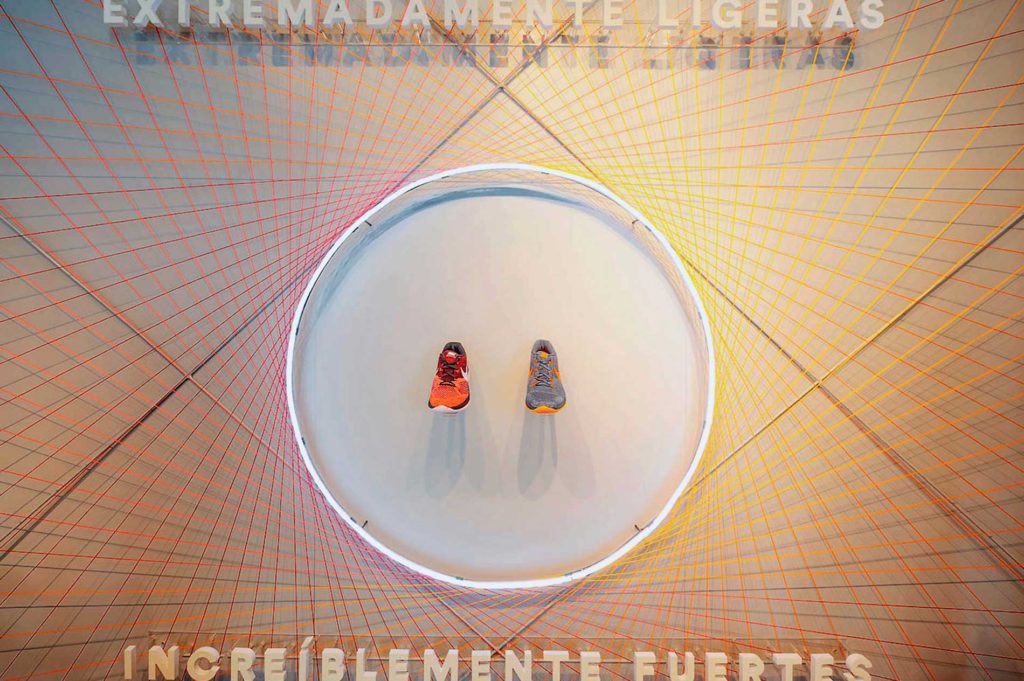
Nike Store Serrano Initiative Zone, Madrid
Initiative zones are those decorative spaces where you want to highlight a product. This can be done in many ways, either through furniture or different decorative elements. One of the brands that pays the most attention to this type of space is Nike, which always reserves a spot as an activation zone in their stores to display the product they want to highlight that season. This was the case with the Nike Flynit Lunar 3 project carried out by INSTORE, where you can see the execution of comprehensive commercial space decoration with an initiative zone included.
Dimensional letters, signage, lighting, vinyl, special furniture, showcases…these are powerful weapons for interior decoration. Everything should be customised for you. It should be different from the rest, clearly showcasing what you offer. Initiative zones are among the most important and effective elements in encouraging purchase. Use them to your advantage.
Often, decoration is the great forgotten aspect. However, we’ve shown that if used strategically, it can be your great ally. For this, it’s good to consult a professional who studies the market, creates a unique brand image, and differentiates you from the competition. Commercial space decoration will ensure your business stands out in your sector.
You may also be interested
Subscribe to always be in touch with us and receive the most interesting articles in the sector
open
08:00 AM-18:00 PM Monday – Friday
08:00 AM-18:00 PM Monday – Friday